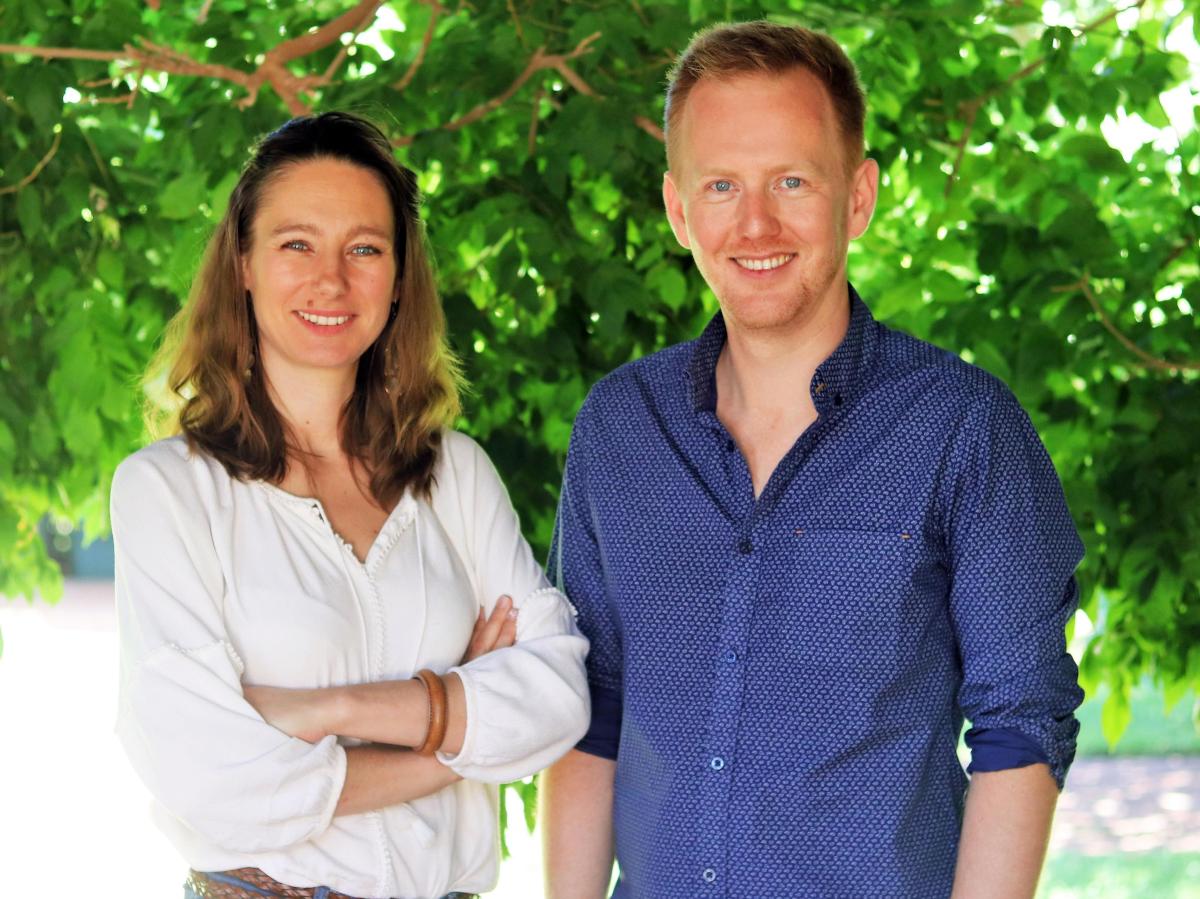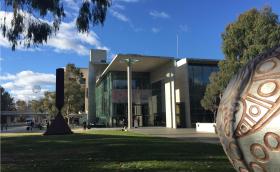Canberra Youth Theatre’s General Manager Anais Maro (left) and Artistic Director Luke Rogers (right). Supplied.
As an actor, theatre director and producer, it’s no surprise that Luke Rogers’ incredible career path has led him to his current role as the Artistic Director and CEO of Canberra Youth Theatre (CYT).
But to Rogers, who first trained as an actor, his path was not as straightforward as it seems.
‘Originally I trained at Theatre Nepean as an actor way-back-when before I did the Directing course at NIDA,’ Rogers told ArtsHub. ‘I worked across the independent sector and I also developed my own work under my own company: Stories Like These.’
Rogers was also previously the Theatre Manager of New Theatre, Artistic Director of The Spare Room, and Resident Studio Artist at Griffin Theatre Company.
Now as the newly appointed Artistic Director at CYT Rogers is excited about expanding and diversifying offerings for young emerging artists.
‘One of the things that we are looking at is to find greater opportunities for collaboration between other arts organisations and community organisations. And not just here in the ACT but nationally,’ he said.
‘I’m really interested in Canberra Youth Theatre – a youth theatre in the nation’s capital – having a louder voice in the national conversation.’
So you want to be an Artistic Director?
From creating a powerful program to commissioning playwrights, the day-to-day life of an Artistic Director can vary significantly.
‘A day in the life of an AD changes in any given week. Ultimately my role is to define the artistic vision of the organisation,’ Rogers explained.
‘What’s unique about Canberra Youth Theatre is that there’s two wings; there’s a really dynamic workshop program, where we offer workshops for young artists between seven to 25 years of age; and there’s our pre-professional training program for emerging artists – one of the things I started to do this week is auditions for what is called our company ensembles.’
With over 30 directing credits to his name, Rogers recognises his multi-faceted experiences as the real driver to his success. One of those profound experiences was his time at NIDA completing his Directing qualification.
‘I was quite active before I went to NIDA, and it was great to have all that experience under my belt. I always called it a bit of creative injection, and it’s exactly what I needed.’
The collaborative educational atmosphere that NIDA provided allowed Rogers to explore varying skills across disciplines.
‘It was a wonderful 12 months of just immersing myself in my practice, and interrogating my craft. It’s not just skills on how to be a better Director, but it’s about interrogating the varied roles of a Director,’ he said.
‘In my year there were six of us and, in terms of aesthetics, style and interests, you probably couldn’t find a more diverse group of people. It was really quite interesting.
‘I think we learnt far more from each other than anything else and it helped to bring some sort of clarity on things that I may have been doing instinctively.’
Ultimately the key skill needed to be an Artistic Director is possessing a clear and exciting vision for the future.
‘I am interested in seeing what opportunities might exist for the creation of new plays with young people as the focus – those works that may have life out of Canberra Youth Theatre ,’ Rogers said.
‘I would love to see works that are seeded here and then go on to be part of the Australian canon of works made for and by young people. It’s a very small company with a big vision.’
NIDA’s MFA (Directing) enables talented early career practitioners to master the directing process. To register your interest to apply for the course in 2020 and more information visit: apply.nida.edu.au






